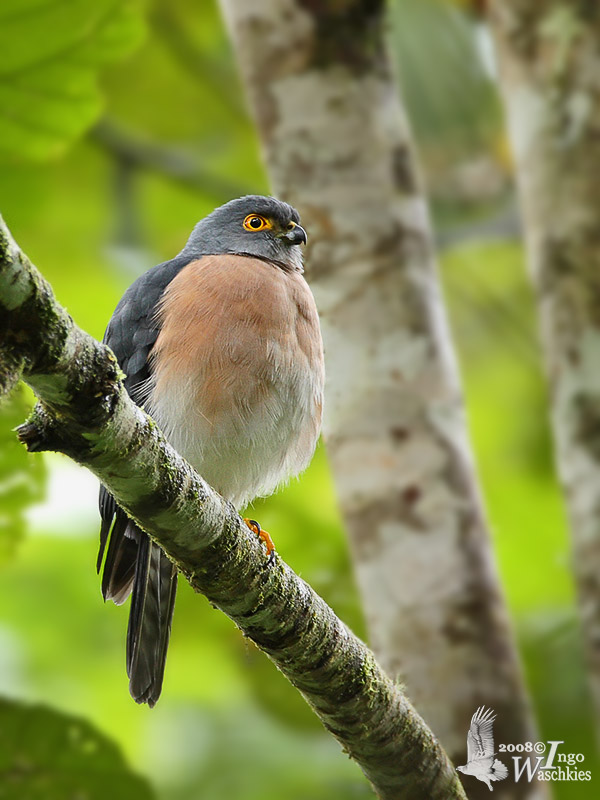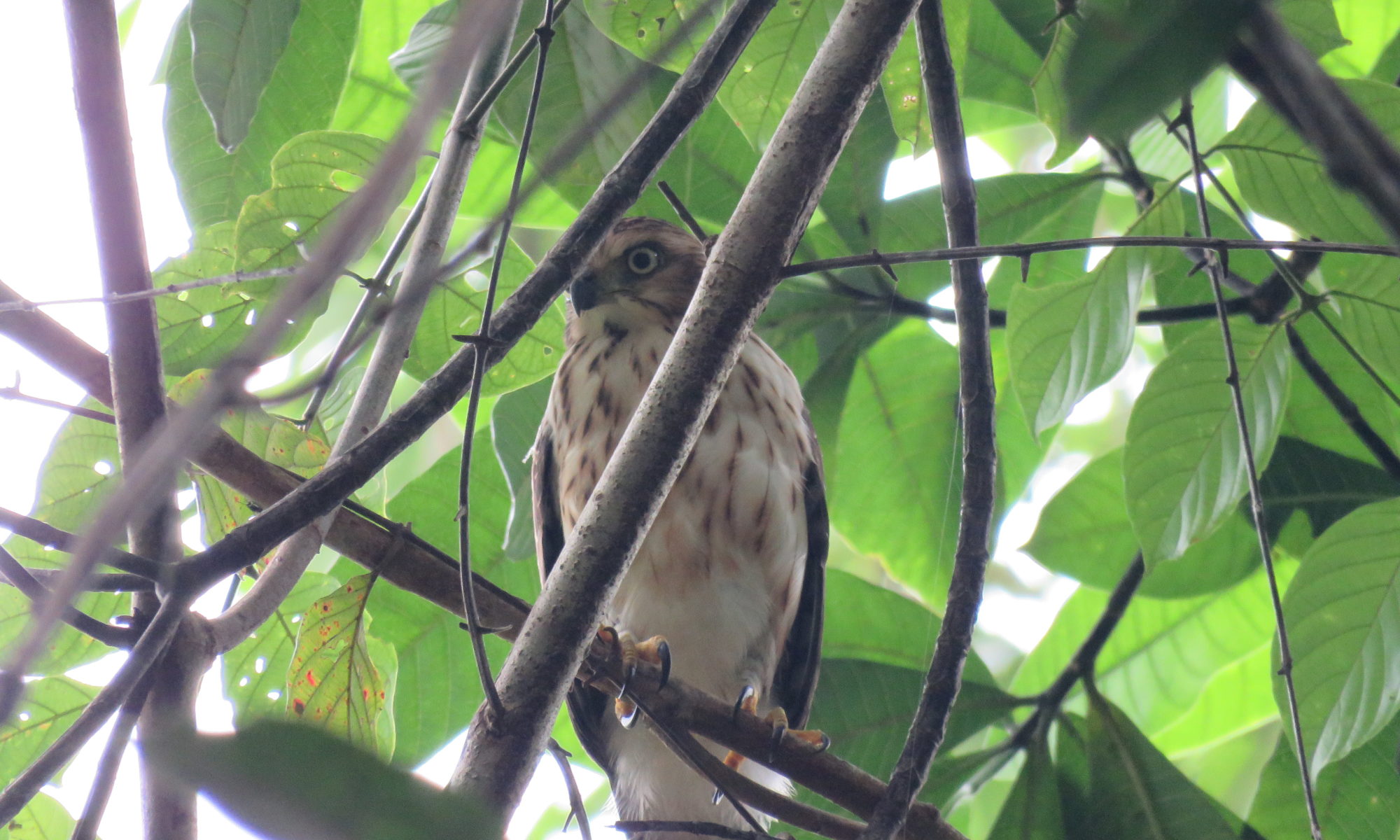- The remarkable bird life of the Wakatobi Islands, SE Sulawesi: hidden endemism and threatened populations - 10/07/2020
- The Bird Life of Wawonii and Muna Islands Part I: biodiversity recording in understudied corners of the Wallacea region - 30/06/2020
- Comparing the biodiversity and network ecology of restoredand natural mangrove forests in the Wallacea Region. - 09/12/2019
Biodiversity monitoring work can often be disheartening. Typically, we end up documenting a decline in whatever species we are working with. So it’s always a pleasure to have the opportunity to deliver some positive news. A stroll with my collaborator Adi Karya around his university campus in Kendari city provided an unexpected opportunity to do just that. Halu Oleo University has quite a unique green space, a 65 ha patch of city forest, an island of jungle in a sea of urban development. While picking our way through a particularly muggy gully we saw the flash of a small raptor in the canopy, giving me just enough time to snap off a shot before it skulked away. Thankfully the photo was clear enough for a species ID (particularly as the humidity in the forest killed my camera for the rest of the field season!). It turned out to have been a Dwarf Sparrowhawk. This elusive raptor is a classified as a Near Threatened montane specialist, with its stronghold in the mountains of central and northern Sulawesi. Therefore our record from the coastal lowland city of Kendari, in southeastern Sulawesi, is several hundred kilometres in distance, and metres in elevation, from the Dwarf Sparrowhawk’s supposed core range.

This record (published in the latest issue of BirdingASIA), along with previous research by Operation Wallacea and TCD Zoology scientists, suggests that the Dwarf Sparrowhawk may be much more widespread and have a wider habitat tolerance than previously thought. We hope future research by our partners in the region will confirm the healthy state of the Dwarf Sparrowhawk and lead to an upgrade of this elusive raptors conservation status.
To find out more, read our BirdingASIA article: ‘A new record of Dwarf Sparrowhawk Accipiter nanus in south-east Sulawesi, Indonesia: is it only restricted to upland forests?’
Reference
Martin, T., O’Connell, D. P., Karya, A., Analuddin, K., Kelly, D. J. & Marples, N. M. (2018). A new record of Dwarf Sparrowhawk Accipiter nanus in south-east Sulawesi, Indonesia: is it only restricted to upland forests? BirdingASIA, 29: 103-104.
Acknowledgements
Thanks to TCD, Halu Oleo University and Operation Wallacea for facilitating, planning and providing logistical support for this research. A big thanks to Kementerian Riset Teknologi Dan Pendidikan Tinggi (RISTEKDIKTI) for providing the necessary permits and approvals for this study 159/SIP/FRP/E5/Fit.KIVII/2017 and 160/SIP/FRP/E5/Fit.KIVII/2017
______________
About the Author
Darren O’Connell is a PhD student in Nicola Marples’ research group in the Department of Zoology, Trinity College Dublin. For his PhD, Darren is studying bird evolution and island biogeography in Indonesia, supported by the Irish Research Council. His wider research interests include conservation biology, restoration ecology and behavioural ecology. Find out more about his research here:
Website | TCD Zoology Profile
Twitter | @oconned5
Research Gate | Profile
LinkedIn | Profile
Google Scholar | Profile


One Reply to “Range extension for the Dwarf Sparrowhawk”